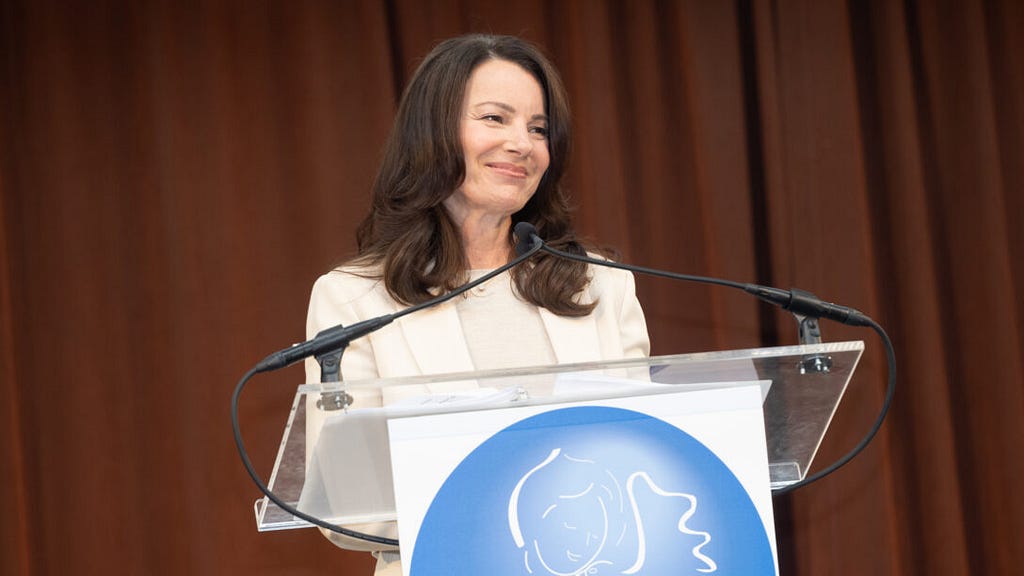Dissecting the latest SAG-AFTRA moves amid a last-minute deadline extension and Hollywood’s “hot labor summer.”

Via Puck:
On Friday, as everyone knows, SAG-AFTRA and the studios agreed to stave off their deadline and continue negotiating a renewal of the union’s TV/theatrical agreements until July 12. In the end, according to everything I’ve been hearing, it all came down to a couple tactical and practical issues.
— —
Basic Wages: I’m hearing the union wants a 12 percent scale increase in the first year of a new three-year contract, and 5 percent adjustments in years two and three. While that first-year number is more than double the 5 percent bump that the Directors Guild achieved in its just-ratified contract, the large initial increase is a reasonable catchup payment — especially considering the back-to-back 7 percent and 6.5 percent inflation in 2021 and 2022 during which the union saw only 3 percent annual bumps. And 5 percent in years two and three amounts to about 1 percentage point above projected inflation, which is consistent with the 1 percent to 1.5 percent margin that the parties have agreed to in previous cycles.
Steaming (SVOD) Residuals: The DGA achieved a significant increase in foreign streaming residuals, but only a small increase in the domestic residual — and, crucially, no additional residual based on a show’s performance. SAG-AFTRA is looking for a success metric and may also be looking for a stronger domestic residual. In foreign, I’ve heard that the DGA formula might be acceptable to the actors.
Ad-supported Streaming (AVOD) Residuals; Pattern Bargaining: The DGA achieved a first-ever residual for high-budget content made for AVOD services, including free ad-supported streaming television (FAST), on platforms such as Tubi, Amazon Freevee and Roku. The residual is calculated as 2 percent of the license fee, which is on the higher end of percentage residuals. (Most are 1.2 percent and only a few are 2 percent.)
The practice of pattern bargaining implies that the studios would also give the writers 2 percent (whenever they do a deal), and that the actors would be offered three times as much, or 6 percent, shared by all principal performers (i.e., non-extras) on an episode. That customary 3x ratio is intended to reflect this sharing, but this time SAG-AFTRA may push for a higher ratio, here and in other percentage residuals contexts, as an actor’s share of the pool is sometimes quite small. Discussing negotiations generally, the union has publicly said (and numerous sources have reiterated to me) that SAG-AFTRA will not be bound this time into a pattern-bargaining straightjacket.
Artificial Intelligence: As already presaged by deepfake technology, generative A.I. may soon be usable to create a performance without an actor. That’s what various people hope, fear or anticipate. The key issue for the union appears to be compensation — certainly if a lookalike is created, and perhaps some compensation even if the thespian is completely synthetic, since even synthetic output is generated by training on actual examples, such as other people’s text, artwork, photography or in this case the performances of actual actors. Some actors also want to have an approval right, so that their voice and likeness could not be used for a lookalike (or perhaps even for training) without the performer’s consent; but it’s not clear that the union is pushing for this.
In any case, the issues are complex: the existing contract already has restrictions on reuse of footage that may or may not cover some generative A.I. scenarios; and meanwhile, the right of publicity — a general legal framework protecting one’s name, voice and likeness — remains relevant but is undercut by contractual grants in the agreements between producers and actors.
Pension & Health: The union’s P&H funds, like those of the other unions, are funded by a surtax, paid by the employer, on a member’s earnings. However, this levy, currently about 20 percent, only applies to earnings up to certain caps. These designated thresholds haven’t increased in decades, depriving the benefit plans of revenue they would otherwise receive, and SAG-AFTRA is looking for a significant increase in the caps. For what it’s worth, the DGA achieved $25,000 to $50,000 increases in the caps in its new deal.
Self-Tape Auditions: As I wrote last October, virtual auditions, or “self-tapes” — the new normal — may save gasoline (no more driving across town) but they have brought many pressures: the pressure to shoot and edit multiple takes to get it right; pressure to infuse auditions with high production values; and pressure to hire readers and camera operators (expenses that are not generally tax deductible)–all to compete against other actors. The union is seeking guardrails to moderate the worst of this.
The Big Question: Will the actors walk?
My guess? SAG-AFTRA will join the WGA in the strike. That will put significant pressure on the AMPTP.
For the rest of the Puck article, go here.
For the latest updates on the strike and news resources, go here.
Inside the Actors’ Strategy was originally published in Go Into The Story on Medium, where people are continuing the conversation by highlighting and responding to this story.
Go to Source
Author: Scott Myers
